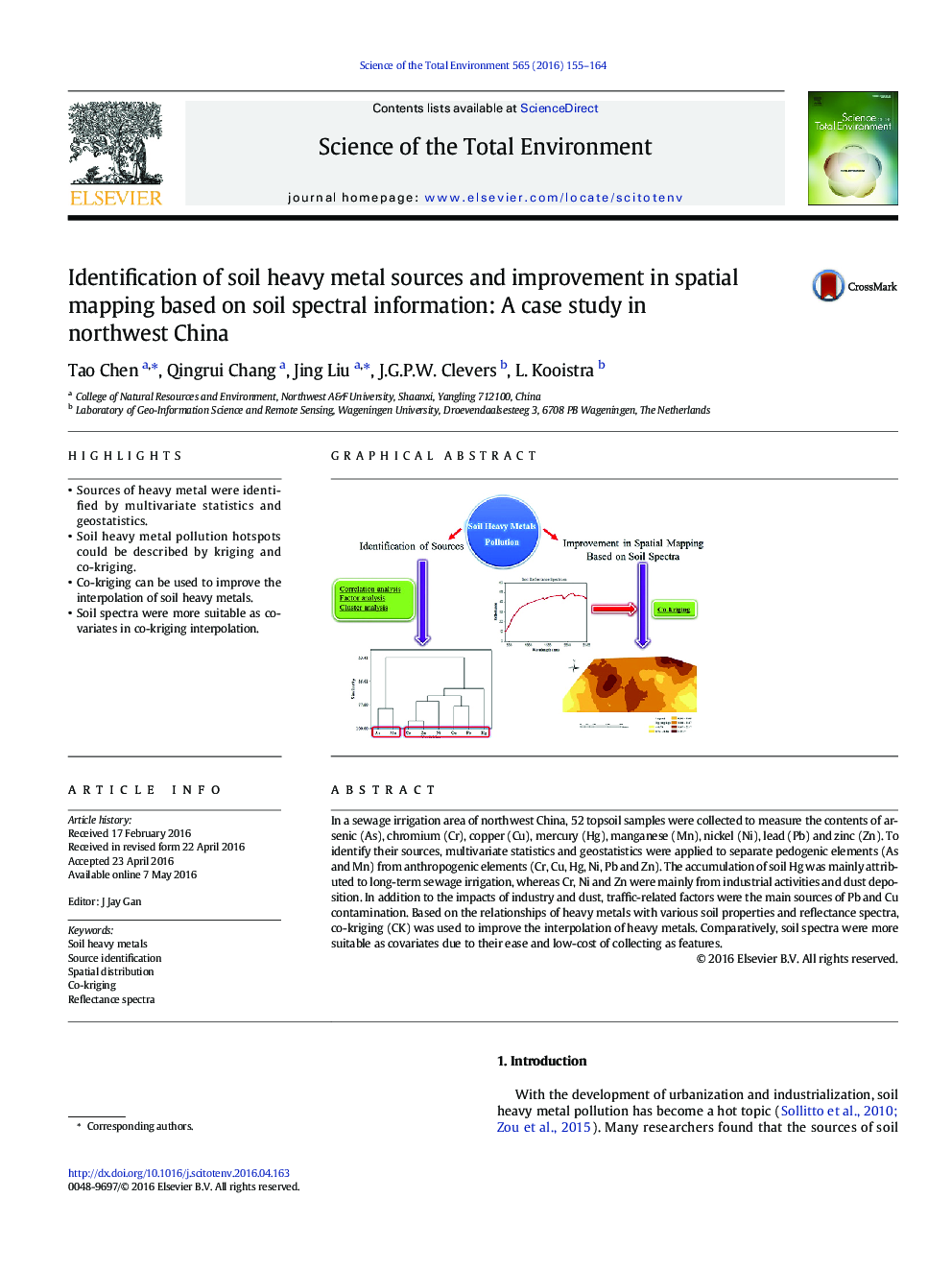| کد مقاله | کد نشریه | سال انتشار | مقاله انگلیسی | نسخه تمام متن |
|---|---|---|---|---|
| 6321934 | 1619724 | 2016 | 10 صفحه PDF | دانلود رایگان |
- Sources of heavy metal were identified by multivariate statistics and geostatistics.
- Soil heavy metal pollution hotspots could be described by kriging and co-kriging.
- Co-kriging can be used to improve the interpolation of soil heavy metals.
- Soil spectra were more suitable as covariates in co-kriging interpolation.
In a sewage irrigation area of northwest China, 52 topsoil samples were collected to measure the contents of arsenic (As), chromium (Cr), copper (Cu), mercury (Hg), manganese (Mn), nickel (Ni), lead (Pb) and zinc (Zn). To identify their sources, multivariate statistics and geostatistics were applied to separate pedogenic elements (As and Mn) from anthropogenic elements (Cr, Cu, Hg, Ni, Pb and Zn). The accumulation of soil Hg was mainly attributed to long-term sewage irrigation, whereas Cr, Ni and Zn were mainly from industrial activities and dust deposition. In addition to the impacts of industry and dust, traffic-related factors were the main sources of Pb and Cu contamination. Based on the relationships of heavy metals with various soil properties and reflectance spectra, co-kriging (CK) was used to improve the interpolation of heavy metals. Comparatively, soil spectra were more suitable as covariates due to their ease and low-cost of collecting as features.
83
Journal: Science of The Total Environment - Volume 565, 15 September 2016, Pages 155-164
